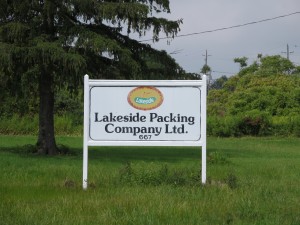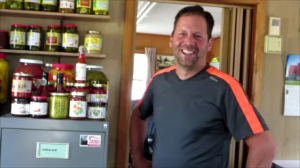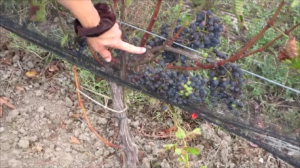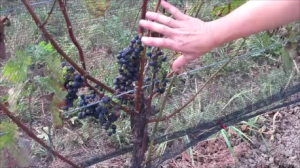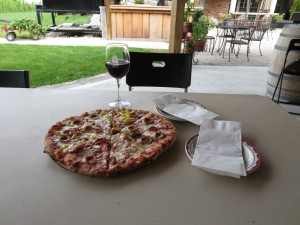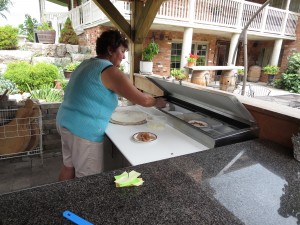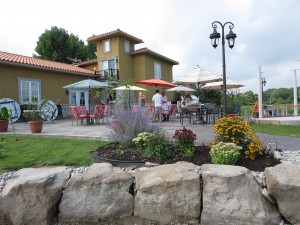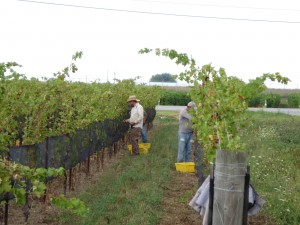The wineries of Niagara-on-the-Lake announced the pairings for their Taste the Season event, which starts Novemer 7, 2014 and runs for four weekends in November (Fridays – Sundays).
Passports are on sale now for $44.25 (totalling $53.39 with the tax and service charge). There’s also a designated driver pass for $35 ($42.94 all in). Passports can be purchased on-line.
I’m planning on popping down to NOL for the event and I’ll do a posting then, but in the meanwhile here’s a list of the 26 wineries and the food pairings for 2014:
BETWEEN THE LINES
2012 Lemberger paired with venison goulash, braised red cabbage with cherries and buttery spatzle
CATTAIL CREEK ESTATE WINERY
2010 Estate Series Pinot Noir paired with mixed wild mushroom risotto drizzled with handcrafted rosemary oil and topped with shaved parmesan
CHÂTEAU DES CHARMES
Brut Sparkling Wine paired with brown butter roasted squash and dijon mascarpone strudel
COYOTE’S RUN ESTATE WINERY
2012 Cabernet Merlot paired with open faced focaccia charcuterie stack with a tomato basil chutney
DIAMOND ESTATES – THE WINERY
2013 EastDell Estates Black Label Barrel Aged Chardonnay paired with creamy autumn potato and sweet leek bisque, made with full country cream and aged white cheddar
HINTERBROOK ESTATE WINERY
2011 Cabernet/Merlot paired with slow-cooked shredded steak and fusili compote
INNISKILLIN WINES
2012 Vidal Icewine paired with carmelized onion tart with Ontario goat cheese and thyme
JACKSON-TRIGGS NIAGARA ESTATE WINERY
2012 Niagara Estate Grand Reserve Riesling paired with cold water shrimp jambalaya with house cured taso ham
JOSEPH’S ESTATE WINES
2008 Caroline Gamay Rose paired with Nutella opera slice
KONZELMANN ESTATE WINERY
2012 Cabernet Sauvignon paired with slow cooked black angus Alberta beef topped with PEI lobster
LAILEY VINEYARD
2013 Cabernet Merlot paired with rustic pork terrine with maple smoked bacon and cranberry compote
MARYNISSEN ESTATES WINERY
2013 Red Blend paired with sundried tomato and olive tapenade on French bread
NIAGARA COLLEGE TEACHING WINERY
2012 Dean’s List Prodigy Icewine paired with spiced pumpkin cheesecake with a chocolate crust and ginger cream
PALATINE HILLS ESTATE WINERY
2012 Cabernet Merlot paired with spiral of beef on infused quinoa enhanced with raspberry preserve and merlot wine reduction
PELLER ESTATES WINERY
2012 Private Reserve Cabernet Franc paired with carmelized onion pulled pork with roasted red pepper and feta compote on a peppercorn and shallot focaccia
PILLITTERI ESTATES WINERY
2012 Oak Aged Chardonnay paired with chef Collin Goodine’s savoury sage and squash soup
PONDVIEW ESTATE WINERY
2012 Bella Terra Cabernet Franc paired with 5 bean chili with pulled pork and ground beef on an open-face mini ciabatta bun
RANCOURT
2009 Merlot paired with garlic teriyaki oven-roasted chicken wing
RAVINE VINEYARD ESTATE WINERY
2012 Ravine Chardonnay paired with chicken and biscuits: farm chicken stew with foraged mushrooms, autumn vegetables and ravine puff pastry biscuits
REIF ESTATE WINERY
2009 ‘Back Vintage’ Riesling Icewine paired with jalapeno pepper flatbread topped with Niagara pear, brie and icewine apricot glaze
RIVERVIEW CELLARS ESTATE WINERY
2013 Sauvignon Blanc paired with herbed goat cheese and wood oven roasted vegetable tart
SMALL TALK VINEYARDS
2013 Riesling paired with handmade speculaas, a Dutch cookie, with nutmeg, allspice, mace and other delectable spices and brushed almond spread
SOUTHBROOK VINEYARDS
2012 Triomphe Cab Franc paired with duck confit/pear and brie phyllo tart
STRATUS VINEYARDS
2011 Kabang Red paired with Treadwell “Farm to Table” tortière
STREWN WINERY
2007 Riesling (Dry) Library Release paired with harvest vegetable terrine, fig, pear & orange compote on cured meat, aged Ontario cheddar
TRIUS WINERY AT HILLEBRAND
2013 Trius Cabernet Franc paired with spiced quinoa with chorizo sausage and a vine tomato sauce
